Swain Alumni Show at New Bedford's Gallery X features more than 200 artists
Regular readers of the Art Beat column do not need to engage in another narrative exposition about the Swain School of Design. Let it be sufficient enough to state but a few facts: it was formed as the Swain Free School in 1882, it began granting the BFA in the early 70s’, and ceased to exist as a private institution when it merged with the state university system in 1988.
For many years, the alumni and former faculty of Swain have been a mainstay of the creative community of the South Coast, and many other communities from Maine to California, from Louisiana to Michigan.
The current exhibition at Gallery X features the artwork of over 200 alumni and former faculty, displayed salon style in the main gallery space, adhering to a curatorial philosophy that suggests that the more, the better. But the sheer quantity is dizzying and to ponder each piece for too long would be stupefying.
However, even though much of the work is worthy of admiration and contemplation, I cannot do justice to all of them in this forum so I’m capping it off at roughly 10%. I selected nineteen paintings and one sculpture which I found particularly attention-grabbing for any number of reasons.
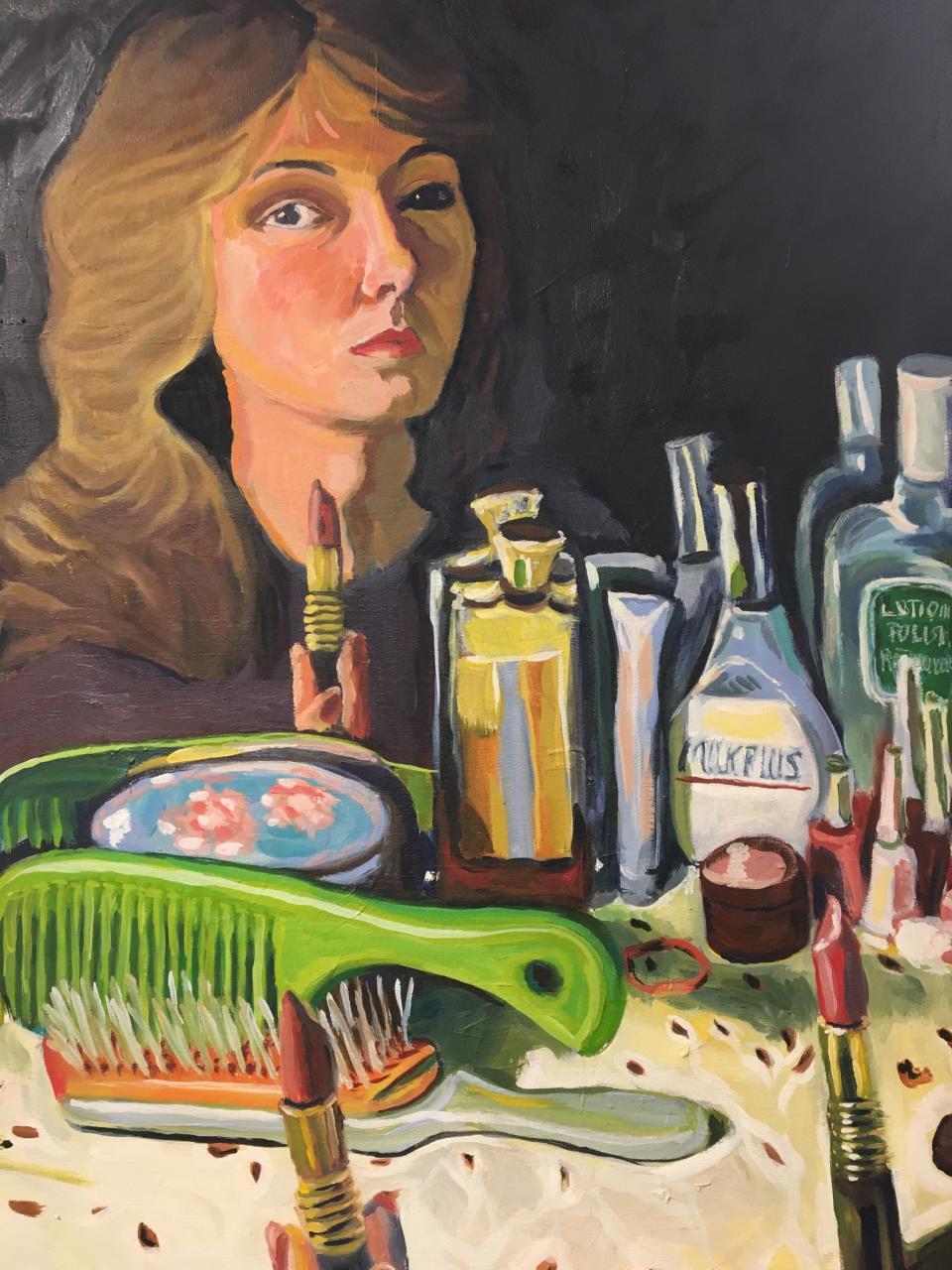
Susan Wilson was in my Swain class and her “Self-Portrait” was done in 1982, our senior year. It certainly is of its time and her youthful exuberance is manifested as she peers into a mirror, over a dresser littered with bottles of nail polish, lotions and perfume. Uncapped tubes of lipstick stand straight up, like missiles waiting for a launch code.
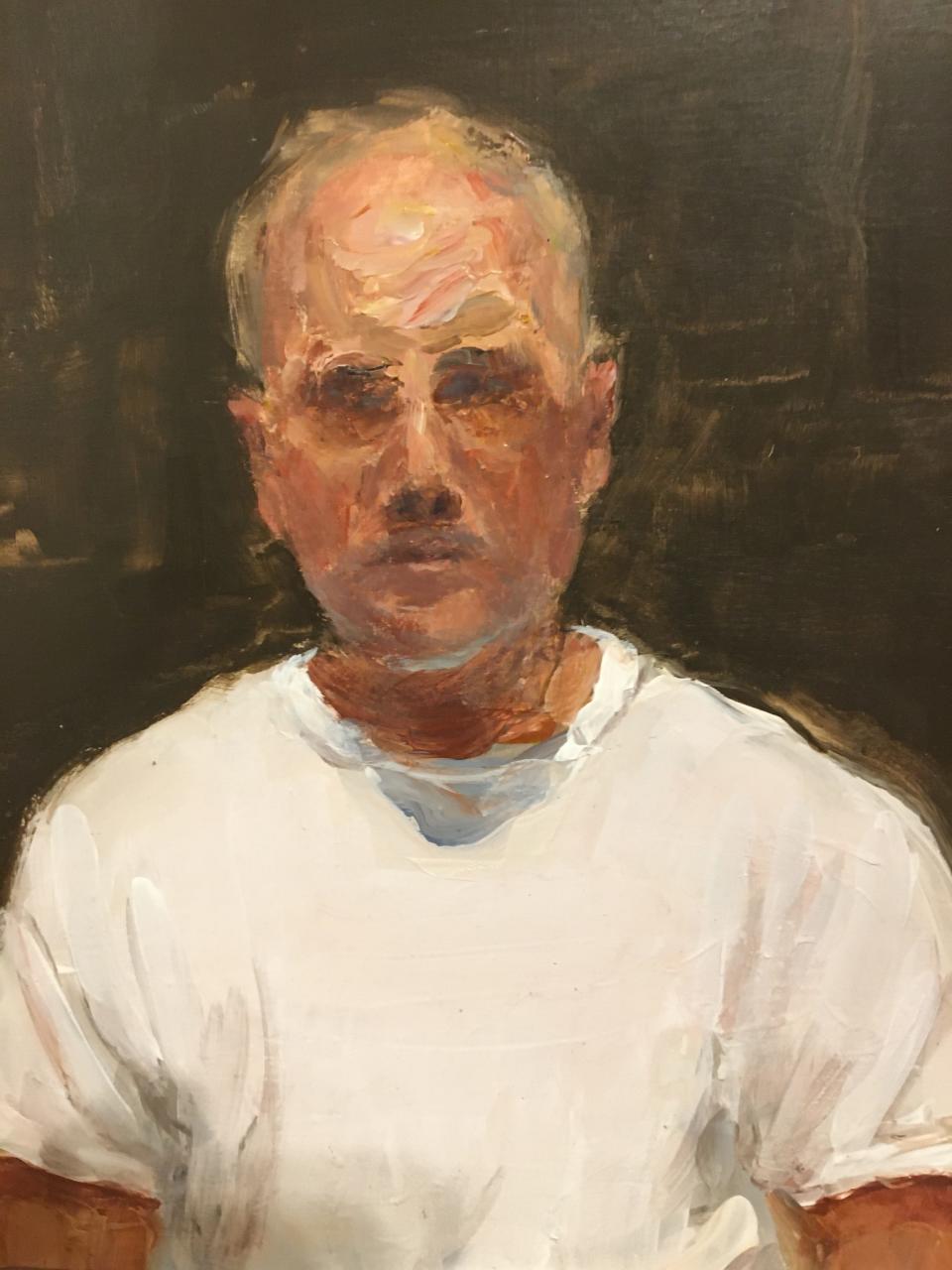
Conversely, Stephen Remick’s far more contemporary “Self-Portrait” is far more gestural and confident. Wearing a stark white tee, he stares at his reflection and into the void. Fully there but not, Remick is flirting with the existential.
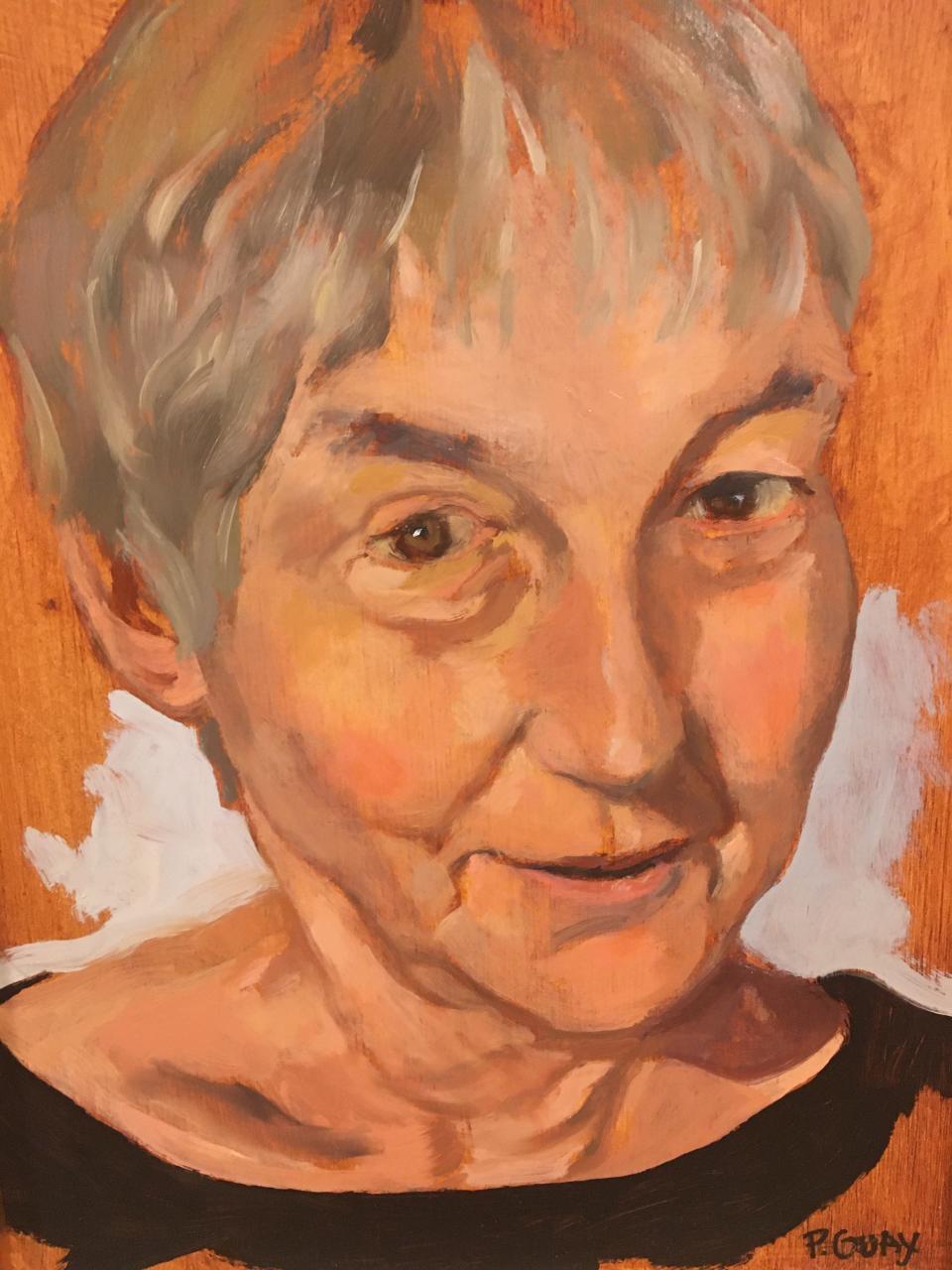
Peter Guay’s “Pam,” a portrait of an in-her-sixties (or older) woman with short cropped gray hair and a smile that might erupt into a laugh, is handsomely rendered with a limited palette of orange, pink and brown.
“Prisoner” by John Vliet is a dimensional painting, featuring a carved face that calls back to the early cubist works of Picasso and his African influences. The visage sits in a recessed area behind thin metal bars, perhaps a not so subtle commentary on the astonishing incarceration rate in this country.
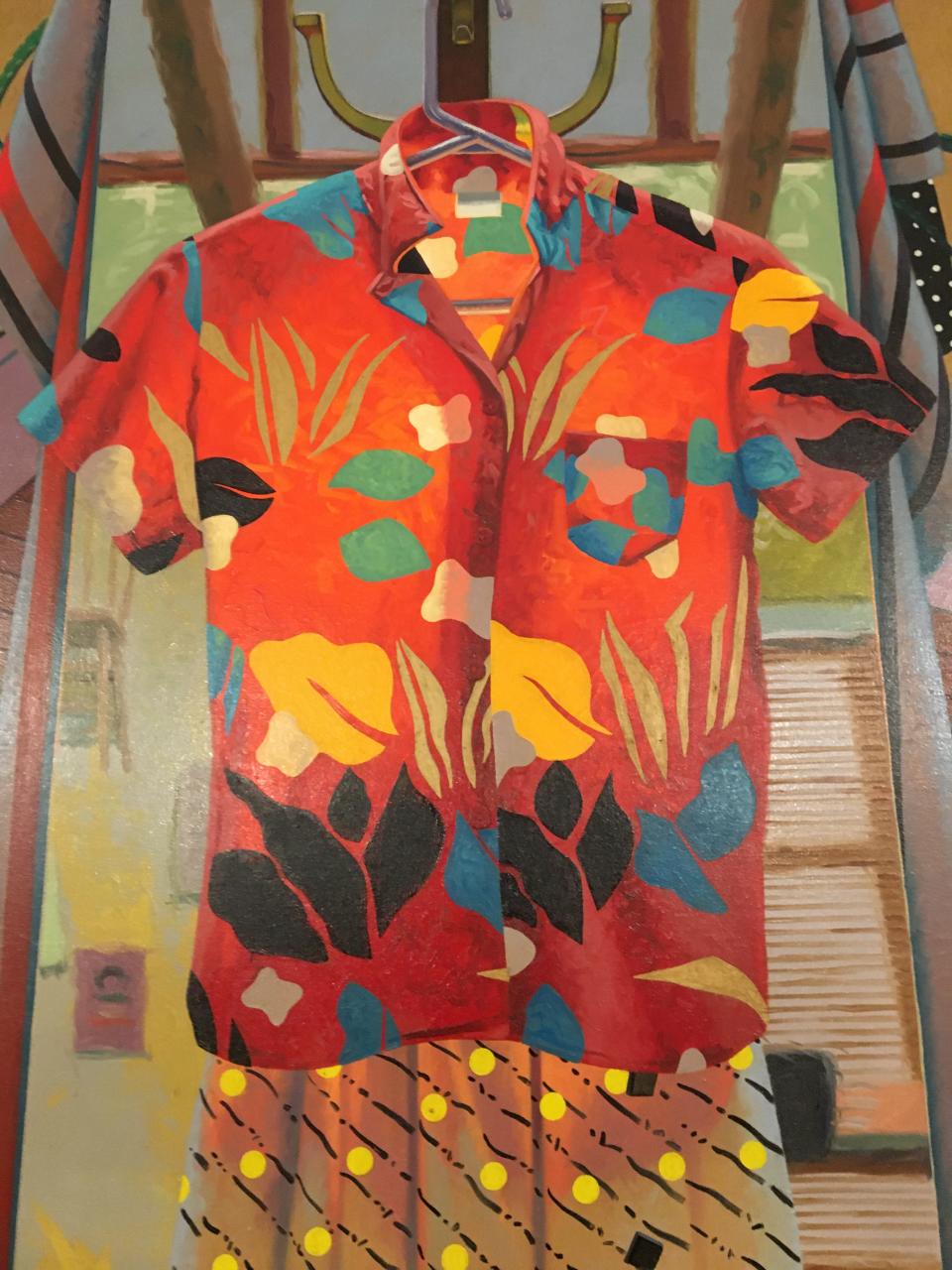
Longtime customers of Freestones City Grill in downtown New Bedford might recognize Dick Dougherty’s “Unknown,” which hung behind the bar for decades. It, too, functions as a portrait of a sort too. A fluorescent orange Hawaiian shirt with a vivid floral pattern hangs on a coat rack and it resonates with the cocaine-fueled energy of a different time.
Ostensibly a non-objective painting, Trish Hurley’s “Warm Memories” nonetheless arrives with the hallmarks of a well-considered landscape. Luscious and soft-edged and luminescent, a yellow sky loving embraces all below it, which may or may not be trees atop a steep ledge.
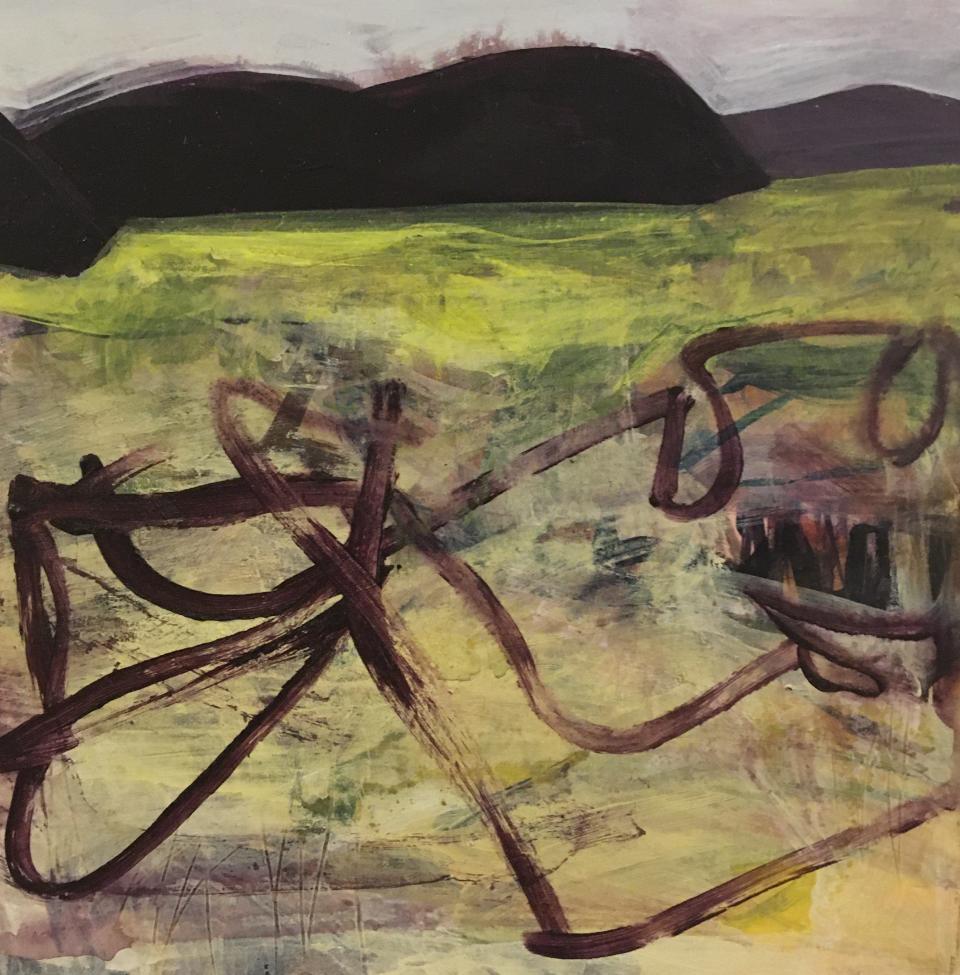
Suzanne Archibald’s “Yellow Landscape” is as much about the nonsense calligraphic twists and turns in the foreground as it is about the acidic yellow-green field and the mountains in the distance. And to put it simply: it works.
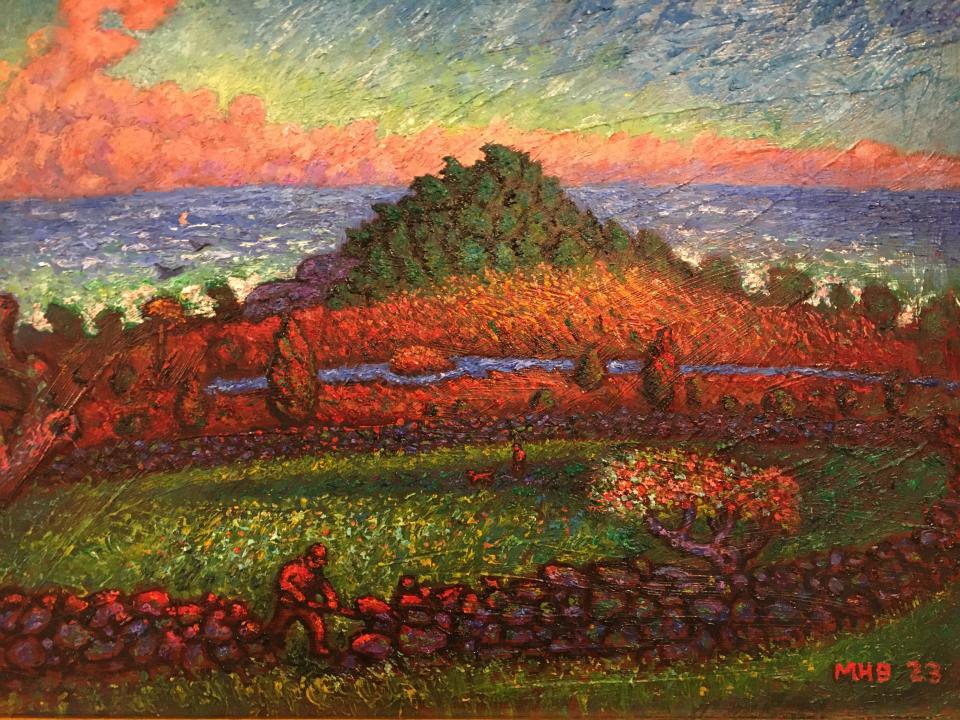
Milton Brightman’s “The Stonemason of Horseneck Road” features a man prodding a stone into place as a pink sky illuminates his jobsite. As Brightman is wont to do, it is an acknowledgement of the natural beauty of the region and a tribute to the working man.
“Towards Hanover Street, Boston” by John Page is a detailed urban study devoid of pedestrians or vehicles or pigeons or trash. Looking at it, it feels wonderfully theatrical, like a stage set before the cast and crew have arrived.
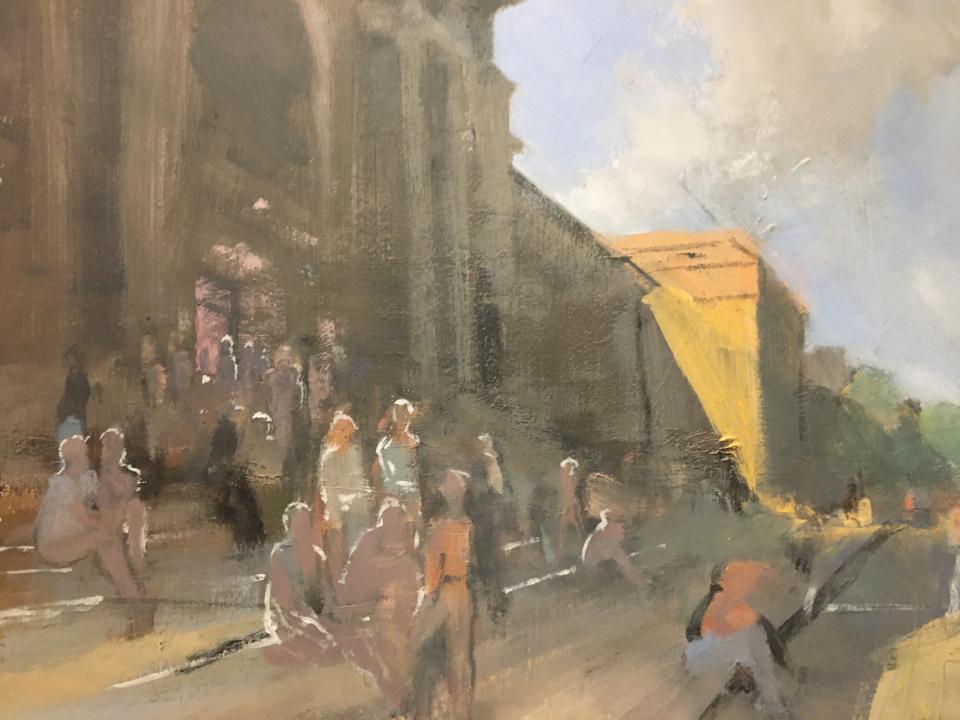
Clayton Lewis’s “The Steps of the Met” will be a familiar scene to many artlovers. Dozens of people are gathered on the steps of New York’s Metropolitan Museum of Art. The light is perfect. A golden shaft illuminates the street, a faint inexplicable pink glows within the foyer.
“Alas! The gods have lured me on to my destruction…” (Iliad, Book XXll). Mythology plays heavily into many of the best paintings in the exhibition, and none more so than in David Loeffler Smith’s “Hector’s Naked Body Dragged Around the Walls.” A violent explosion of color and swirling energy broadcasts the horror of the scene without resorting to explicit detail.
Local art scene: Star Store is the heart of the New Bedford arts world. How closing it hurts the community.
Cathy Valley’s “In Memory of David Smith” pays homage to her mentor by depicting a couple descending a hill, perhaps indicative of the banishment of Adam and Eve from the Garden of Eden.
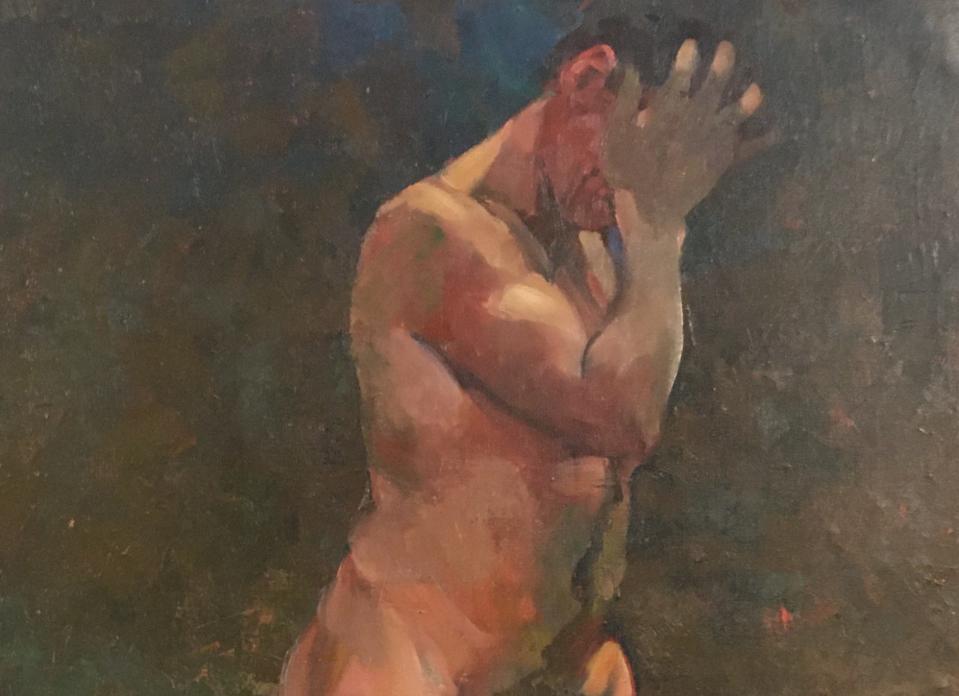
More to the point is Meredith Cornell’s “”Expulsion,” in which a naked man wipes tears from his eyes. Cornell is a masterful painter that evokes pity for Adam for daring to taste the Forbidden Fruit. Knowledge comes with a price.
David Paulsen’s “September” is an enigma but an engaging one. Even without an obvious connection to the gods of the Greek pantheon or the vengeful God of the Old Testament, Paulsen’s painting “feels' ' like mythology. The tale is not clear and the desire to understand it is a draw unto itself.
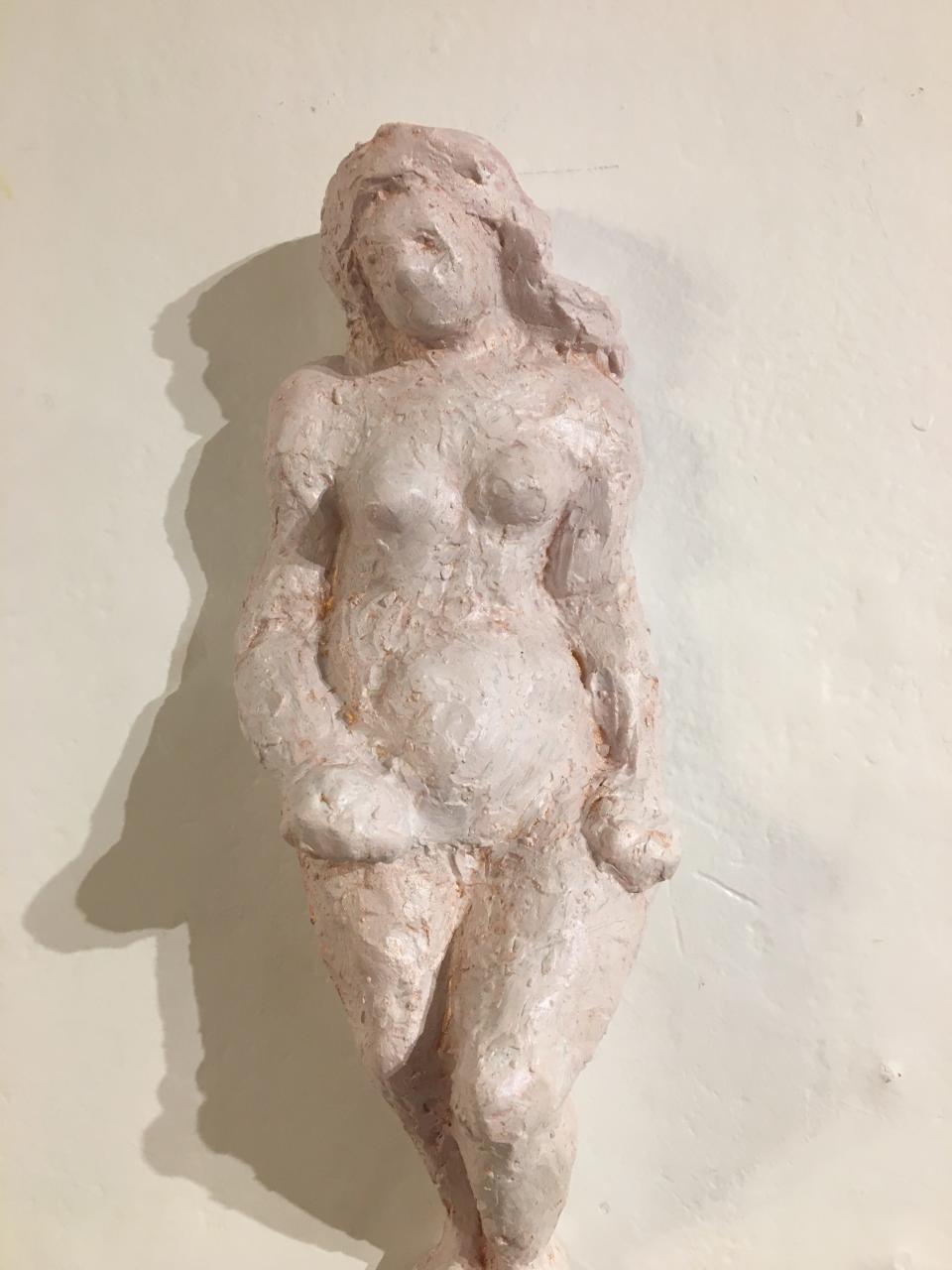
Mark Lariviere’s three-dimensional “Figure” is about the size of a Barbie doll, reimagined with the figure of a real-life woman. And it may just be that. But it too has the magic of myth about it. She is Eve, Isis, Venus, the Eternal Woman.
A still cat isn’t really a still life but Stephen Richardson’s “Nigel Cat” somehow works as one. Painted primarily in shades of gray, it pops off the page, almost appearing as relief. The feline whiskers, made of twine, contribute to that wonderful illusion.
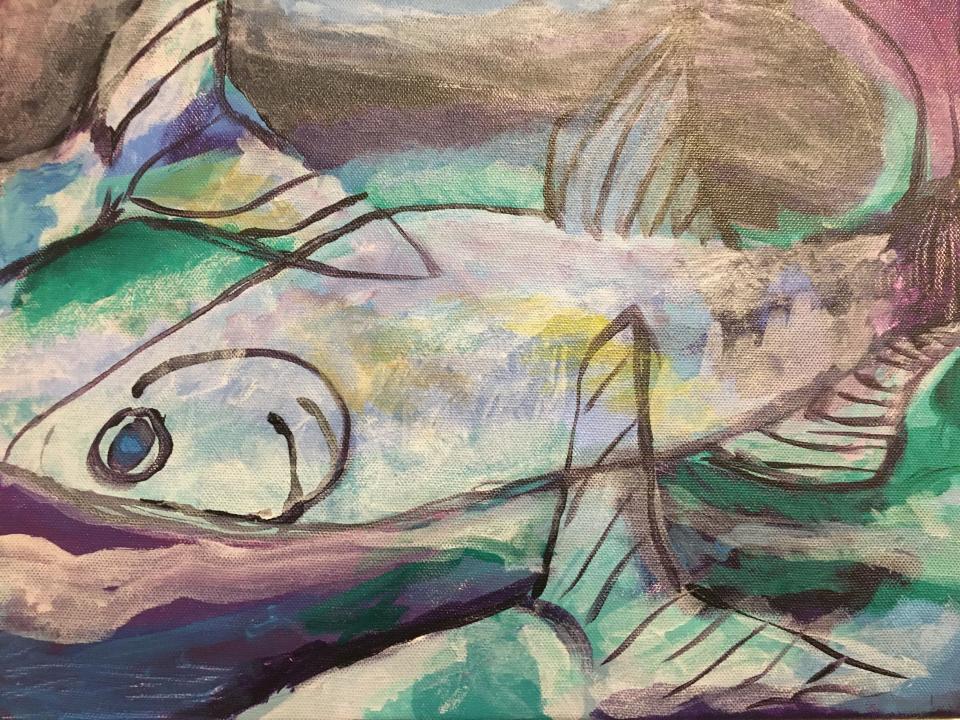
“Cabo Fish” by Karen Graca shimmers with translucent silvery blues, lavenders and greens, and one big dead eye staring at the viewer, as if with accusation.
I have written about the late Darrel Dwelley’s “Back Porch” and I stand by my previous assessment: “It is naught but a simple still life but oh, what a still life it is. It includes a terra cotta pot from which brilliant pink blossoms arise, a pair of orange handled kitchen scissors and a bowl with a deep blue concave. He was capable of finding a lush sensuality even in the most common of objects.”
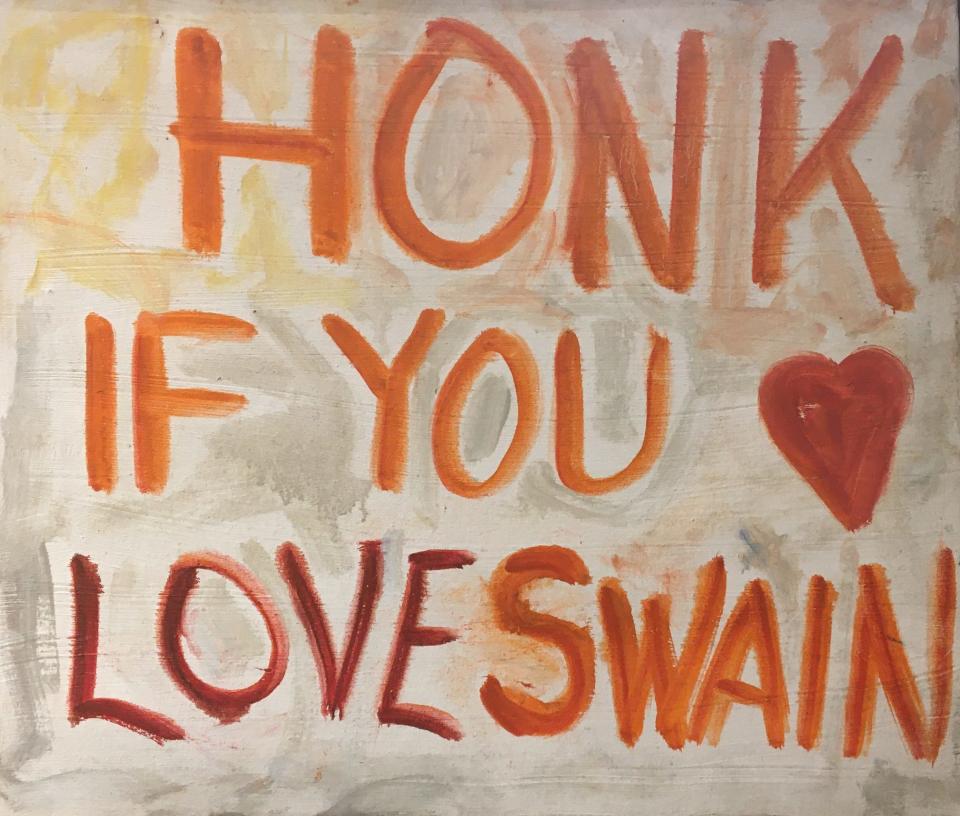
The last work of this review was painted but it’s not a painting in the traditional sense of the word. Back in 1982, Swain was going through some internal turmoil not unlike the recent CVPA Star Store debacle. There were angry protests; many of us took to wearing bright orange armbands; we occupied buildings and some students left the school, never to return.
Peter McClure painted five words on a canvas and stood in front of Swain all day long, for weeks. Those five words were “HONK IF YOU LOVE SWAIN.”
The car horns never stopped beeping.
“The Swain Alumni Show” is on display at Gallery X, 169 William St., New Bedford, until Oct. 1.
"Art Beat" is a weekly arts column by contributing writer Don Wilkinson.
This article originally appeared on The Herald News: Swain Alumni Show at New Bedford's Gallery X

